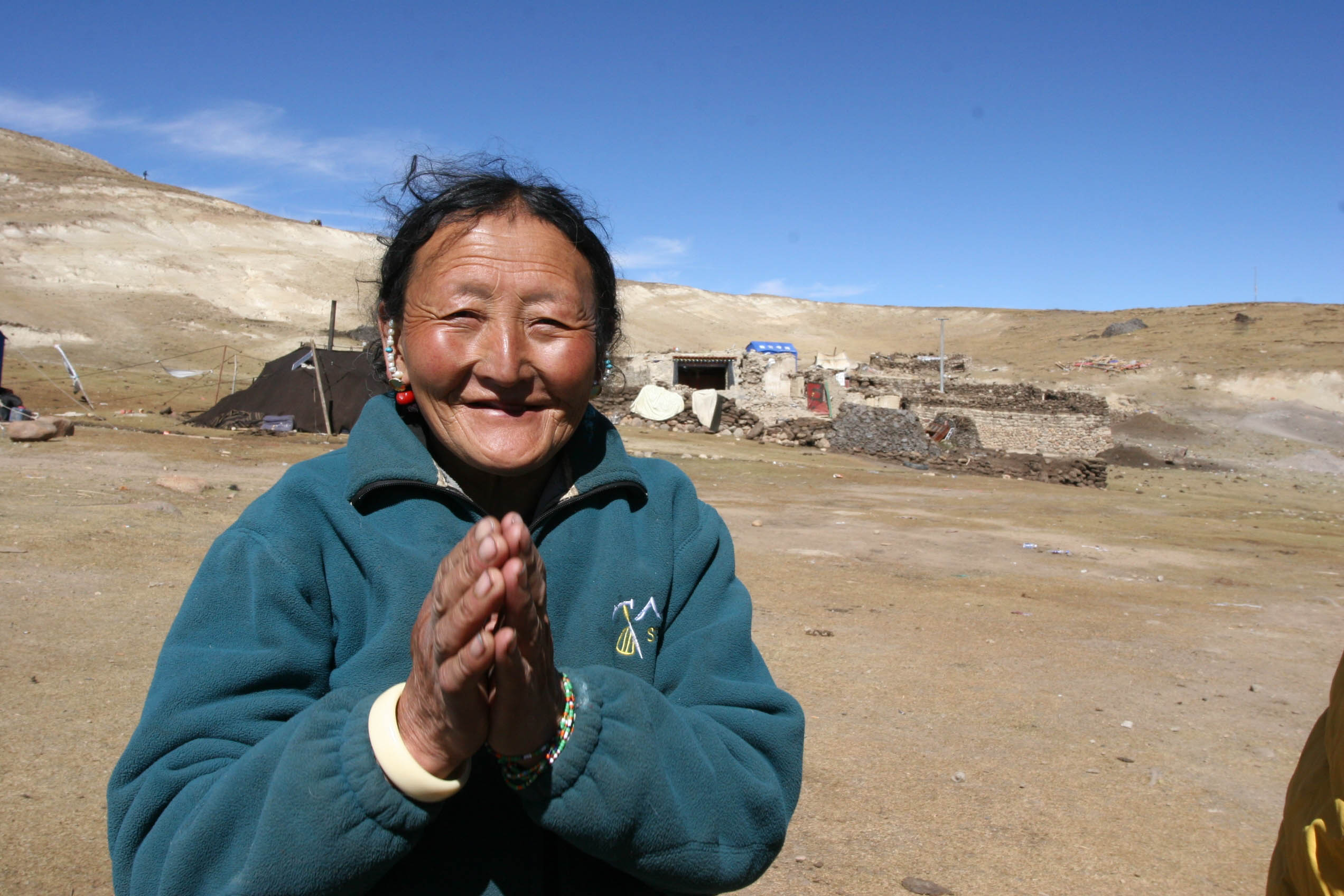Tibetan body language

"Signal language" refers to when people use some kind of object or by their own body movement to pass information to other people in a nonverbal manner.
All nationalities have some sorts of signal language and naturally Tibetans are no exception. The signal language in Tibetan-inhabited areas is rich and peculiar and Tibetans are adept in using this language to express tactful intentions.
In Tibetan inhabited areas the most widely used signal language of close range is figure amongst which the most common are various hand gestures.
If a Tibetan may put up his thumb to express satisfaction or agreement; if he put up both thumbs at the same time, it is a gesture that expresses an appeal for pity.
Putting one's palms together is a sign of sincerity and respect. On the other hand, if someone draws one palm, then he wants you to stop talking or shut up.
In accordance with traditional customs, people are not allowed to pass in front of guests who sit down; if to pass by guests, they should bend down and extend both arms with palms pointing upward to ask for the guest’s understanding.
If a Tibetan puts up his pinky on the left hand and spits out saliva into the air, it is a way to express disdain and curse.
If a Tibetan puts his index finger on to the bridge of nose and pulls it down to the lips, it is to make pledges to those around that what he just said was real and justifiable.
If a Tibetan takes his index finger and puts it on the neck moving to and fro while sometimes also saying “a ge lala” in a small voice, this is a kind of praying action. This particular movement will contribute effectively to communicate, even if the other side is hardhearted, he may not refuse the request.
